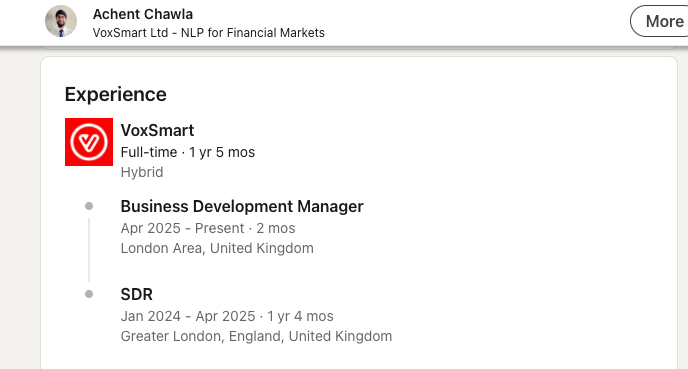Jumpstart’s BIG Startup 5K Returns for 2025
LONDON, 10 JULY 2025 Jumpstart’s BIG Startup 5K is back! Following a wildly successful debut, Jumpstart is bringing the...
3 Minute ReadJust raised your Series A? This guide covers everything you need to build a scalable sales team, from hiring your first sales leader to onboarding junior talent and tracking performance.
If you’ve just raised your Series A, or are staring it down, it’s time to think seriously about sales team.
Not “founder pinging people on LinkedIn” sales. We’re talking scalable, repeatable, team-driven sales. The kind of system that turns product-market fit into predictable revenue.
This is your playbook for building that system. We’ll cover what roles to hire, who should lead the sales function, how to set new hires up for success and what numbers to watch as you grow.
Before we get into sales team structure, let’s be clear about one thing:
Series A is not the time to “find” product-market fit. That should already be there. What you’re building now is go-to-market fit. You should be solving a real problem and starting to see signs of traction. At this point, it’s probably time to start scaling your sales team.
At this stage, the founder often begins to step back from leading the sales function and starts to delegate real ownership. That usually means hiring your first Head of Sales or sales leader, who can come in to build and lead the sales function.
If you’re at a place where the sales function is sitting primarily with the founder, we’ve written a full guide on moving beyond founder led sales to help guide you through the process.
Your first sales leader is a critical hire. And often a hard one.
They need to coach and support the sales team, manage performance, define and own the playbook, and generally ensure the sales engine runs without the founder in the room.
But it can take a while to know if they’re good. Sales, naturally, has a ramp-up period, making it difficult to notice underperformance until months in. To combat this, it can help to hire someone who’s done it before, ideally at a company with a similar sales motion, deal size, and buyer type.
Once you have a sales leader, they can start thinking about the other sales roles that are needed. For most Series A startups, that looks something like:
Avoid the temptation to copy another startup’s org chart. If you’re closing five-figure deals in two calls, your structure will look different from someone selling six-month pilots to enterprise. Design for your startup.
To really set your sales function up for success, you want to build out your sales team with exceptional sales talent. We’ve written a full guide on how to hire top junior sales talent but in short, we’d recommend you use Jumpstart (shock!). Jumpstart finds the top 1% of junior to mid-level startup sales talent, handpicked from thousands of applicants. You can get a sense of the quality of our candidates on our preview page.
The benefit of exceptional talent is that they’ll grow with your startup. Take Achent Chawla as an example. Achent joined VoxSmart via Jumpstart as an SDR. “He quickly became the most successful SDR” VoxSmart have ever hired (Sebastian Wren, Snr Sales Manager @ VoxSmart) and just over a year later, got promoted to BD Manager where he’s now hiring SDRs (via Jumpstart, of course).

At this point, it’s easy to drop the ball. As a sales lead you’ve hired great people…and assume they’ll figure it out.
The reality? Sales onboarding takes time. Especially for more junior hires.
Give new hires structured exposure to the product, the customer, and your sales process and techniques.
Over time, you’ll figure out what works best for your startup, but early on, flexibility and coaching are key.
You can’t scale what you’re not tracking.
Sales is ultimately about outcomes, but inputs matter too, especially in the early days when the pipeline might still be bumpy. Keep an eye on:
For longer sales cycles, input metrics might be your best proxy until results start flowing but there are other ways you can monitor your junior sales hires:
Considering all of these can give you a sense of whether your sales function is growing in the right direction and whether results should start to come over time.
Ready to scale your Series A sales team? Start with a sales leader who’s done it before. From here, the sales lead can hire in quality junior talent and provide support to the sales team with training, structure, and clear expectations. Be mindful of copying & pasting another startup’s structure. Instead, design around your proposition and your sales cycle.
Looking to add exceptional talent to your sales team?
Jumpstart connects fast-growing startups with the top 1% of junior sales talent. Preview our candidates here.
